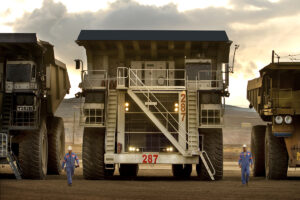In my old age, I have become a convert to legacy processing of beneficiated ores to selectively extract the desired elements and ultimately purify them to end-user standards. I know that this makes me an apostate of the school of disruptive technology, but I have come to understand that pursuing disruptive technology is more of a prayer to the gods of money-making than a rational economic plan.
Whether innovation occurs at random or is driven by need is a question for philosophers of technology (Yes, Virginia, there is such a subdiscipline within the philosophy of science academic world).
Direct lithium extraction (DLE), the recovery of magnet rare earths from the mineral, eudialyte, and the manufacturing of rare earth permanent magnets (REPMs) without the need for dysprosium or terbium, are three of the candidates for disruptive technologies that have lately caught the attention of “investors” in the EV and alternate energy technologies “space.” But we must be cautious. Why? Because unless any or all of the three “technologies” can be created to give economical, efficient results for the sources and uses of the necessary critical metals then there is no point to them.
The endless bench top experiments that are touted by the technologically impaired as “disruptive” and/or “breakthroughs” are simply the continuous variation of research from which the natural selection of economics selects winners.
So far, there has never been a successful DLE technology deployed at an industrial scale. Since most of the current experiments were funded when lithium prices were trending to an all-time high, the basic due diligence question is: What will be your cost per kg of the end-user-specified product? Carnival barking promoters regaling us with visions of membranes, sorbents, selective molecules for specific separations, new ion exchange protocols, and the like are just background noise to this basic due diligence question.
So far, high-coercivity magnets (able to withstand high-temperature operations without losing their magnetic strength) are not being made industrially in mass production without dysprosium, terbium, and gallium (three very scarce metals).
So far, no one has been able to create an economical method for extracting rare earths from the mineral eudialyte, which, according to legendary rare earth geologist (Dr.) Anthony Mariano, is the most commonly accessible rare earth mineral on the planet. This means that investments in such deposits in Greenland, continental Europe, and Africa are very risky.
Scientists perform experiments to determine if a theoretical point can be proven to be accurate, not whether or not such accuracy will lead to economically efficient mass production. Junior miners taut experiments as proof of a concept even when the results are not indicative of acceptable economics. The amount of capital that can and should be deployed to support experiments in mineral processing improvements is limited.
China, which for more than a quarter of a century has encouraged its youth to study STEM (science, technology, engineering, and mathematics) now deploys the largest ever in history cohort of such professionals (individuals who make their living in one of the professions gathered under the STEM umbrella). The Chinese have decided that the time to focus on the development of their own country as an independent science, engineering, and manufacturing giant is now. The Chinese believe that to be competitive, they must STOP sharing engineering technology results with outsiders, and they are now actively doing just that.
Thus, there is an added risk to investing in the three technologies I have outlined above. The Chinese, who are very interested in all three areas, may have mastered them or, worse, discarded attempts to develop them as non-economic without telling us that.
I urge investors to look carefully for the business models of junior miners that look promising to them.
If they do not contain economically driven choices for technology and do not recite a comprehensive knowledge of the state of the art, then, to paraphrase the philosopher said about non-numerical reasoning, cast them into the flames for they are nothing but illusions.
You have been warned.
Editor: Jack Lifton
Jack Lifton is the Co-Chair of the Critical Minerals Institute (CMI), which was founded in 2022 and is focused on building a North American critical mineral supply chain.…
This article was published by: Jack Lifton
Visit the original article here



